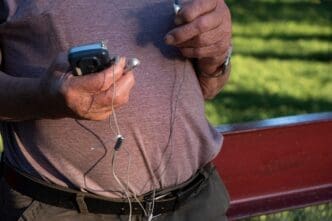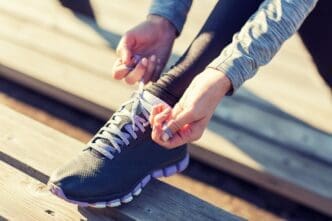A Quick Takeaway
The Story Behind the Trend
How to Make It Work for You
The Community View
Fall detection devices are innovative technologies designed to automatically sense when a person has fallen and immediately alert designated contacts or emergency services, potentially saving lives by ensuring a rapid response. Primarily benefiting older adults, individuals with mobility challenges, or those living alone, these critical tools can be worn as pendants, wristbands, or integrated into smart devices, providing invaluable peace of mind both inside and outside the home. The urgency of a quick response to a fall, especially if an injury occurs, underscores why these devices are not just conveniences but essential components of a proactive health and safety strategy.
The Critical Role of Fall Detection in Personal Safety
Falls are a significant health concern, particularly for adults aged 65 and older, often leading to serious injuries like fractures, head trauma, and even long-term disability. The fear of falling can also lead to reduced activity and social isolation, further impacting quality of life. Fall detection devices mitigate these risks by bridging the gap between an incident and the arrival of help, ensuring that critical medical attention is not delayed.
These systems typically employ accelerometers and gyroscopes to monitor movement patterns and sudden changes in orientation, distinguishing between normal activities and an actual fall. Once a fall is detected, the device initiates an alert, often through a cellular connection, to a monitoring center, family members, or emergency contacts. This immediate notification is paramount, as the “long lie”—remaining on the floor for an extended period after a fall—is associated with poorer health outcomes and increased risk of hospitalization.
Key Features to Look For in Fall Detection Devices
When selecting a fall detection device, several features can significantly enhance its effectiveness and suitability for individual needs. Understanding these capabilities helps ensure you choose the best option for safety and comfort.
Automatic vs. Manual Activation
The hallmark of a truly life-saving device is its ability to detect a fall automatically, even if the wearer is unconscious or unable to press a button. While most devices include a manual alert button for non-fall emergencies, automatic detection is crucial for comprehensive protection. Always check the sensitivity and reliability of the automatic detection feature.
GPS Tracking and Two-Way Communication
For active individuals or those who spend time outside the home, GPS tracking is indispensable. This feature allows emergency responders or caregivers to pinpoint the wearer’s exact location after a fall, regardless of where it occurs. Many advanced devices also offer two-way voice communication, enabling the wearer to speak directly with the monitoring center or emergency services through the device itself.
Water Resistance and Battery Life
Since many falls occur in bathrooms, a water-resistant device is essential for continuous protection. Look for devices rated for showering or even submersion. Furthermore, consider battery life; devices that require frequent charging can be inconvenient and may leave the wearer unprotected if forgotten. Extended battery life or easy charging solutions are preferable.
Comfort, Ease of Use, and Monitoring Options
A device is only effective if it is worn consistently. Therefore, comfort and discretion are important considerations. Devices should be lightweight, non-obtrusive, and easy to wear. User-friendliness, particularly for older adults, is also key. Finally, evaluate the monitoring services offered: professional 24/7 monitoring centers provide immediate dispatch, while some systems allow alerts to go directly to family or friends, offering flexibility based on personal preference and support networks.
Top Picks and Categories of Fall Detection Devices
The market for fall detection devices is diverse, offering solutions tailored to various lifestyles and needs. Here are some prominent categories and examples.
Medical Alert Systems with Fall Detection
These dedicated systems typically involve a wearable pendant or wristband connected to a base unit or directly to a cellular network. Providers like Life Alert, Medical Guardian, and Bay Alarm Medical offer comprehensive packages with 24/7 professional monitoring and reliable automatic fall detection. They are often designed specifically for seniors, prioritizing ease of use and robust emergency response.
Smartwatches with Integrated Fall Detection
Modern smartwatches, such as the Apple Watch (Series 4 and later) and certain Samsung Galaxy Watch models, now include sophisticated fall detection capabilities. These devices leverage their advanced sensors to detect hard falls and can initiate an emergency call if the wearer remains motionless afterward. They appeal to tech-savvy individuals who prefer a multi-functional device.
Home-Based Sensor Systems
Less common but increasingly innovative are non-wearable fall detection systems that use radar, pressure sensors, or motion detectors placed strategically throughout the home. These systems offer a hands-free solution, ideal for individuals who may forget to wear a device. They continuously monitor for falls without requiring direct interaction from the user.
Choosing the Right Solution for You
Selecting the ideal fall detection device involves carefully weighing your personal circumstances, activity level, and technological comfort. Consider whether you need mobile protection with GPS, or if a home-based system is sufficient. Evaluate the costs, including monthly subscription fees for monitoring services, and ensure the device fits seamlessly into your daily routine.
Regularly testing your chosen device is crucial to ensure it functions correctly and that your emergency contacts or monitoring service are responsive. This proactive approach ensures that when a fall does occur, the system will perform as expected, providing the swift assistance that can make all the difference.
Fall detection devices are more than just gadgets; they are vital tools that empower individuals to maintain independence and provide essential peace of mind to their loved ones. By understanding the technology, recognizing key features, and choosing a system that aligns with personal needs, anyone at risk of falls can significantly enhance their safety and potentially save their life through timely intervention.








